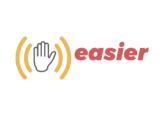In an increasingly globalized and tech-savvy world, the use of machine translation is constantly expanding. Machine translation is no longer used solely by professional translators and linguists – it is proving an essential tool for marketing professionals, customer service operators, as well as private individuals in their everyday lives.
There is a big chance that you also have used machine translation a fair few times in a personal context, for example, when typing ‘coq au vin’ into your phone’s web browser to decipher a restaurant menu during your holidays in France or when clicking ‘see translation’ to be able to follow some hot discussion on Twitter. And you are not alone – every day, Google Translate translates over 100 billion words between more than 100 different languages.
A safe conclusion, therefore, is that machine translation, which already enjoys such a strong presence in our everyday lives, is here to stay. You might wonder, however – what exactly is it, and how does it work?
Current status and evolution of machine translation
Machine translation is the process of using artificial intelligence to automatically translate one language to another without human involvement. By engaging the deep learning capabilities of artificial intelligence, machines learn to translate through training with large matched data sets. Modern machine translation goes beyond simple word-to-word translations and can communicate the full meaning of the input language text in the output language by analyzing all text elements and recognizing how the words influence one another. Thus far, machine translation has been predominantly based on text (reading text, generating text), and with a vast majority of known techniques geared toward text processing, sign languages have been left behind in this technology. The first developments in the field began in the 1970s, but due to limited resources, it was difficult to perfect the technology. Now, with more funding available and more researchers and developers involved, machine translation for sign languages is seeing many improvements and is finally on track to become more widely available.
What does it take to make machine translation functional for sign language translation?
To make machine translation functional, several aspects need to come together. Firstly, natural language processing and computer vision expertise need to be combined. That means, for instance, creating a system able to ‘read’ or ‘encode’ a sign language video using a computer vision component, such as a convolutional neural network, and then giving this encoded summary of a video to a natural language processing component, such as a transformer, which is good at generating text in a spoken language. Secondly, time needs to be invested in pre-training. That means that before making a machine translation system learn the translation task directly, developers need to make it learn something preliminary. That could be, for instance, learning about the structure of one language only (without the translation part) or learning from a crude dataset first. That also works for the computer vision side, where as a first step, a video component can learn about human movement more generally, for example, by learning to tell apart big, sweeping movements like ‘walking’ before moving on to learning the fine motor details that a system must be able to tell apart for sign languages. Finally, to generate sign language specifically, what makes our current approach work are linguistic rules, which are hand-written by experts.
Will machine translation eventually replace human translation?
The undisputed strength of machine translation is the speed of the translation process. However, machine translation will never be able to achieve the nuances which render a text innately human, like humor, wordplay, and cultural context. Because of that, machine translation and human translators and interpreters will never compete. Instead, they will complement each other to provide the best results in given situations.
| The goal is not to replace the human interpreters that are simply indispensable in a variety of settings. The communication tool would merely serve as a handy translation tool for brief interactions on occasions when hiring a human interpreter is not desired or feasible. |
We launched this communication campaign to shed more light on the technical work of the EASIER project. Follow us to learn more about the exciting ways in which EASIER has been pushing the boundaries of technology toward a sign language translation tool. In the next article, we will explain what signing avatars are. Stay tuned!

